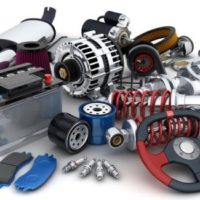OEM or Aftermarket?

When it comes time to make a repair or perform car maintenance that includes replacing an old, worn-out or defective part, you have the choice of choosing a part that was manufactured by or sourced by the car’s Original Equipment Manufacturer (an OEM part) or by some other company (an aftermarket part). A lot of factors may go into whether you use OEM or aftermarket for a replacement part, including whether you are doing the work yourself, taking your car to the dealer or an independent shop, and whether the repair job includes an insurance claim or not. Below are some of the main issues to consider in deciding whether to go aftermarket or OEM.
Cost, Selection and Quality
Everything is more expensive at the dealership, and this includes parts as well. Although not universally true, in almost every case you will be able to find aftermarket parts that are cheaper than OEM. While there is only one OEM part by definition, there may be many options to choose from when looking at aftermarket parts. These include brands you have probably seen before, heard of or even used, such as AC Delco, Fram and Monroe, and many, many more that you have never seen, heard of or used before. These various parts will likely differ somewhat in terms of price and, more importantly, quality.
The greater selection among aftermarket parts means there is more competition and more possibility for innovation among the products, along with a differential in price ranging from very cheap to even more expensive than the OEM version. While price-shopping is important for many consumers, selecting the cheapest aftermarket part you can find may not be the best solution. Instead, choose a brand you know and trust, or perhaps get advice from an employee if shopping at an auto parts store. Whereas you have to go to the dealer to get an OEM part, aftermarket parts can be found at any auto parts store, as well as the automotive department at your favorite discount warehouse store.
If you don’t do your homework, you may not wind up with a high-quality part from a trusted manufacturer. In fact, the aftermarket part you purchase may not even work with your specific car. Aftermarket parts tend to be more universal in their design so that they can work with a greater variety of makes and models, allowing the manufacturers to produce mass quantities more cheaply and make a greater profit. If you go with OEM, you know it’s going to work your specific vehicle, because the part was made specifically to fit your car, even if it also works with other models by the same manufacturer. On the other hand, the part you are replacing is probably an OEM part that broke in the first place. It may be that OEM part has a defect, and aftermarket innovation may solve the problem that the manufacturer refuses to address.
What about Warranty?
There are two types of warranties to consider here – the part’s warranty, and your vehicle warranty. As to parts, OEM parts are typically warrantied for one year, while aftermarket parts may come with a much shorter warranty or no warranty at all. As to the vehicle’s warranty, if you are taking your car to the dealer for a warranty repair, they will obviously use OEM parts. If you are doing the repair yourself or taking your car to an independent shop, first make sure that doing so will not void your warranty. If not, using aftermarket parts will likely not void your warranty either, but it may depend upon the part, so it is worth looking into if you still have time left on your vehicle warranty. If you are leasing the vehicle, the terms of the lease will probably govern who is making the repairs and what kinds of parts they will use.
If your car is being repaired after a car accident and is subject to an insurance claim, the estimate you get from the shop may well include aftermarket parts, because the insurance companies always want to save money at your expense. You may try to insist that OEM parts be used; this is something you may have to haggle over with the insurance company, and your success may depend on whether you are filing a collision claim under your own policy or whether a negligent driver’s liability insurance is covering your repairs. Many automotive industry resources such as Edmunds recommend always using OEM parts for collision repairs. They report that aftermarket body panels may not fit and may not have the correct crumple zones needed for optimal crash safety. If you feel the insurance company is not treating you fairly and meeting your needs, you may need to get an experienced car accident attorney to advocate on your behalf.



